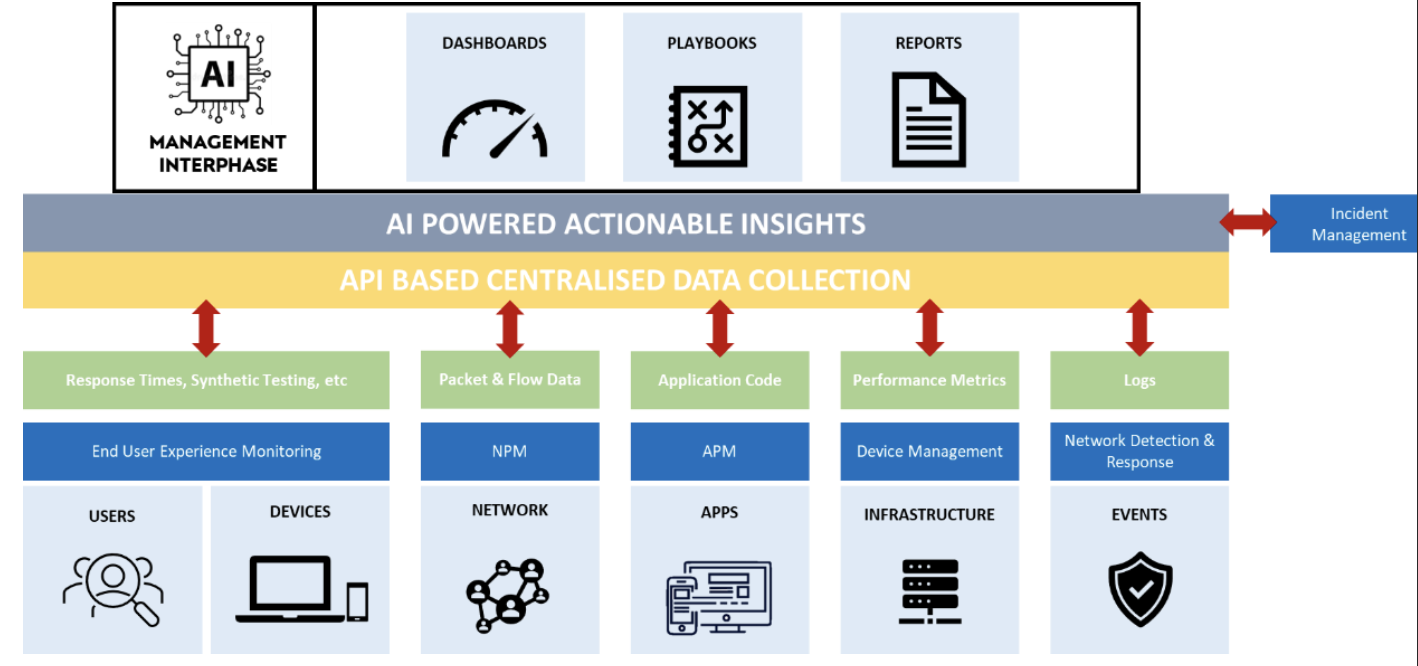Simplifying Everyday Network Management: How AI is Changing the Game
Artificial Intelligence (AI) is the current buzz word in IT with AI promoted as the magic ingredient for improving business performance across a wide range of areas. But how, specifically, does AI enhance Network Management?
The idea that computers can manage themselves is nothing new. As a child, I grew up watching Star Trek: The Next Generation, where the friendly computer voice would warn the crew of potential dangers and make changes to operations on the Enterprise at the request of Captain Picard and his crew. While we might not be at Star Trek levels of AI-based network management just yet, there is a very interesting range of new network monitoring and management platforms that promise to make science fiction, science fact.
Across the Network Management space today, there is no shortage of tools that provide a wealth of data from flows, packet, applications, cloud telemetry, system logs and device metrics. The challenge has always been the collection and presentation of this data. The reality on the ground is that collection and management of this data is done by a range of different tools and often by different departments. The dream of a “single pane of glass” has remained just that, a dream.
Traditionally, in the event of a major incident, the network team, desktop team, application team, server team, cloud team and any other team would have to come together in a “war room” and manually compare data from all their different tools, often arguing about what the problem actually is and what might be causing it. The new breed of AI-based network management can remove the need for these situations by dramatically simplifying how data is collected, analyzed and acted on. In simple terms, AI changes the network management game. But how is this achieved in the real world?
The process starts with feeding data to the AI through APIs and other secure data exchange methods. This data is then crunched by the AI to look for anomalies. If one is detected, then the AI will run a “Playbook” to troubleshoot the issue and then apply a fix, if authorized. In addition, as the AI becomes the central point of knowledge, it can provide a range of dashboards and reports with actionable insights based on best practice or system enhancements it identifies.

figure 1. Simplified Generic AI Network Management Architecture
If used correctly as part of your network management strategy, AI results in reduced downtime, pre-emptive maintenance and reduction in operational costs while, at the same time, saving network administrators’ time and simplifying operations. AI’s evolving role in this space is making it easier for companies to run their networks and is bringing us closer to self-healing zero-touch (or minimal-touch) network management.
The new breed of AI-based management tools is still in their infancy and have a number of limitations, with most relying on human assistance to make changes. However, as the technology evolves, and AI becomes common place, more and more BAU operations will be turned over to machines and the way we manage networks will change forever.
In Summary, AI management tools enhance network monitoring, management, and analytics. Their current usefulness lies in their capability to forecast network issues and automate responses or provide network admins with the information they need in real-time to resolve issues. Through the analysis of vast amounts of data from various sources, AI and machine learning offer a deeper understanding of day-to-day network performance and current utilization levels.
While this is still an emerging area of technology, we are closer than ever to the “single pane of glass” network management and the ability to manage large complex networks simply and efficiently.
If you would like to know more about AI network management or how the power of AI can be harnessed across your IT environment, meet with us.
Author: Brett Ayers, VP of Product, Teneo

